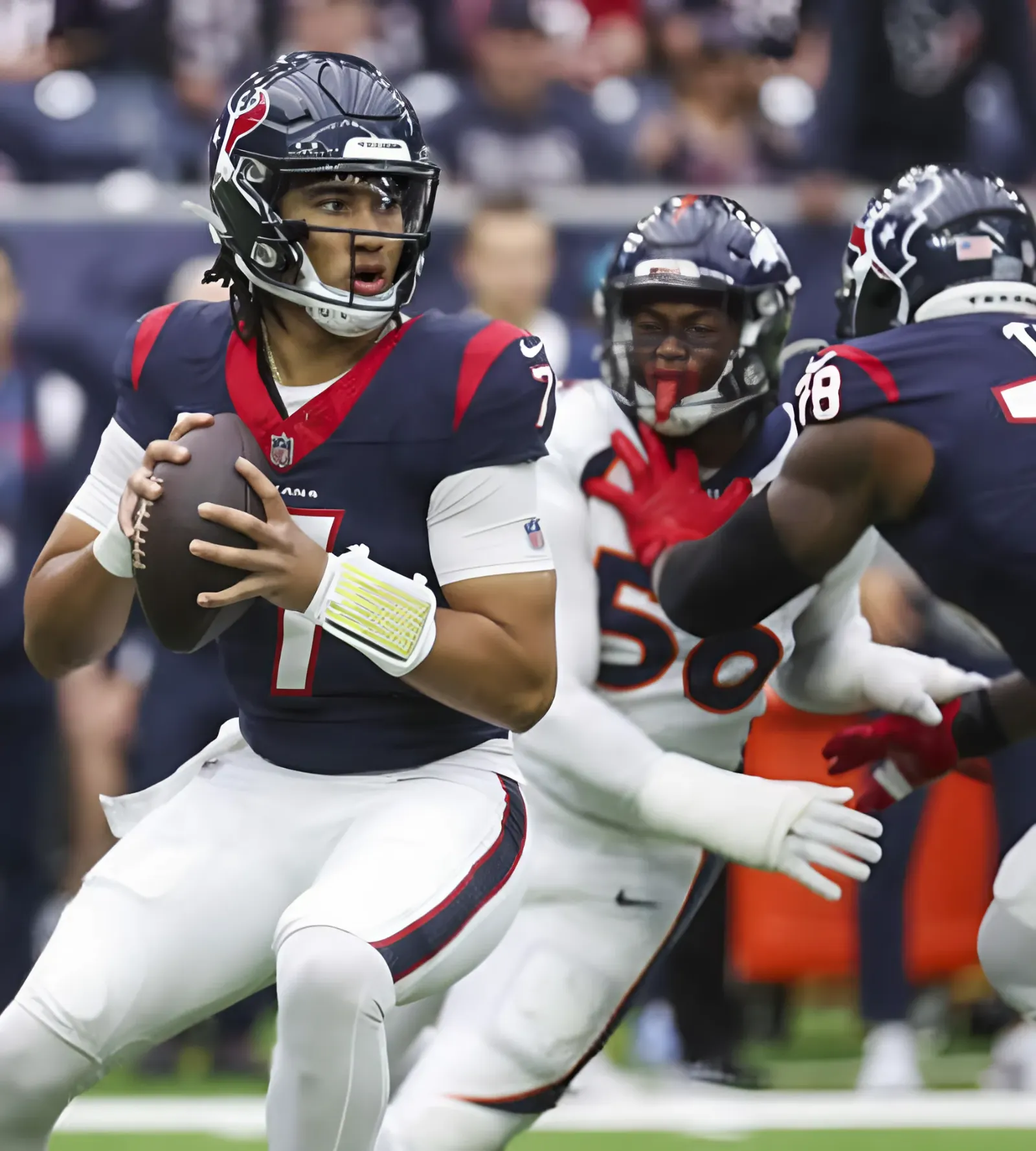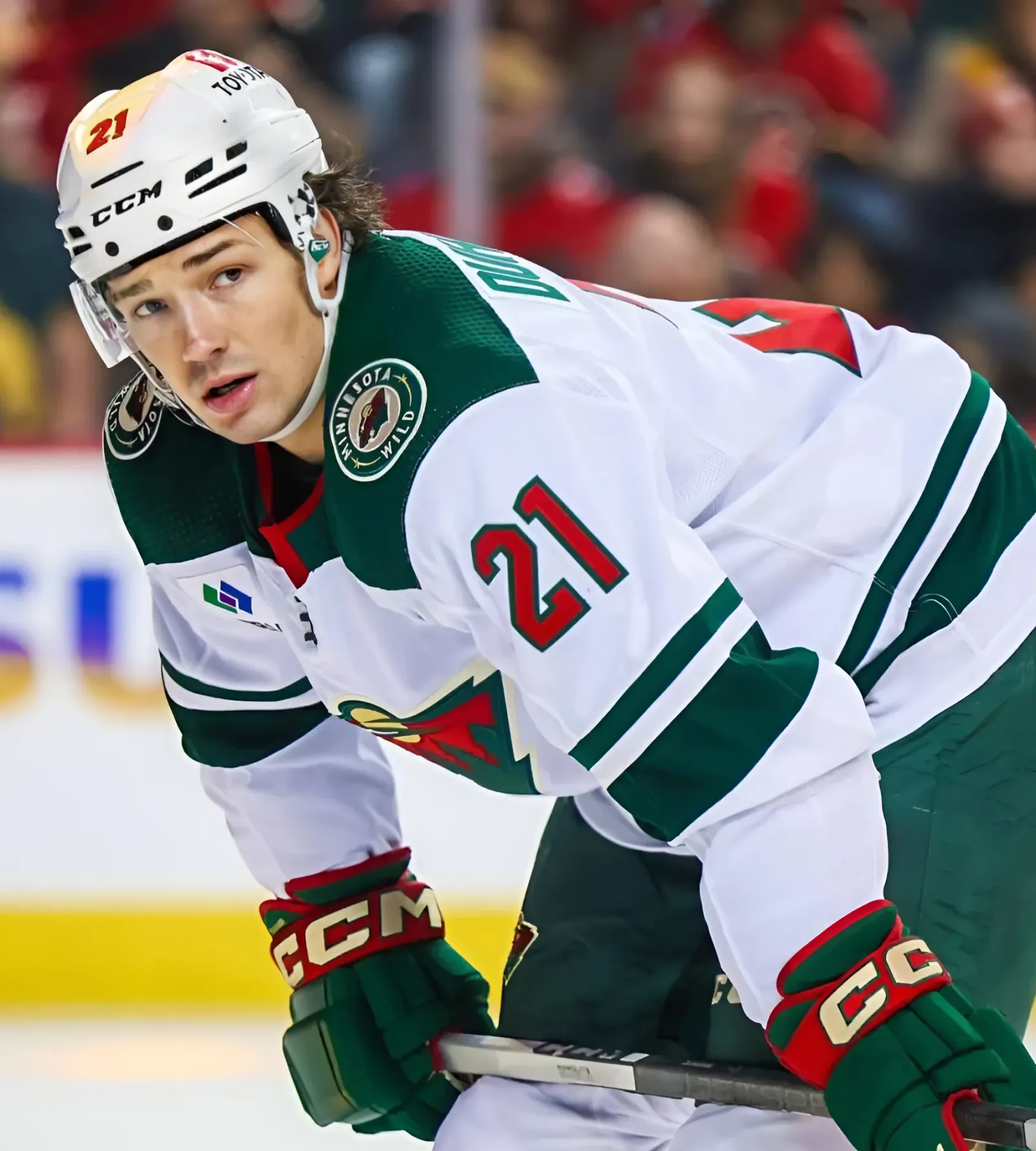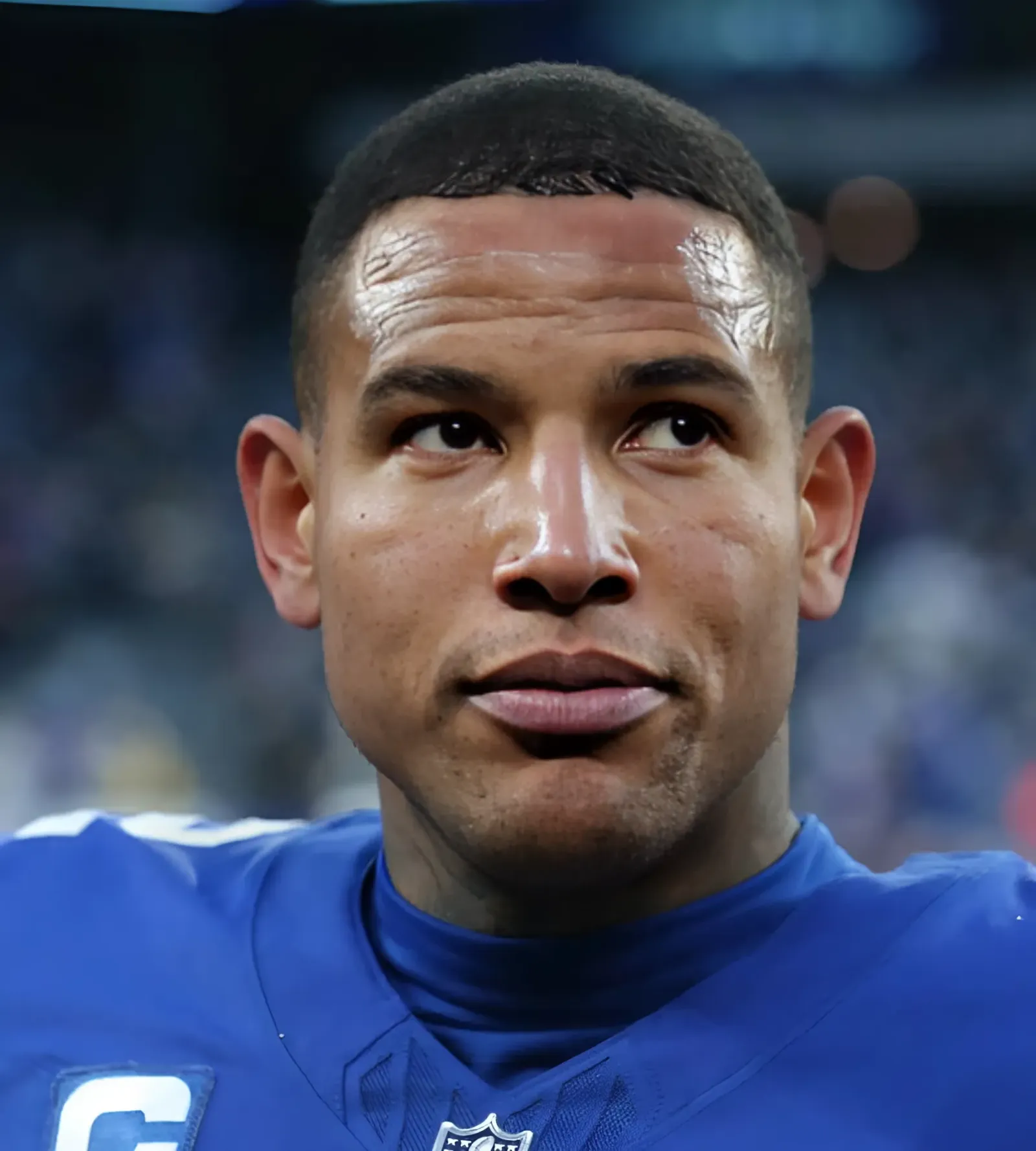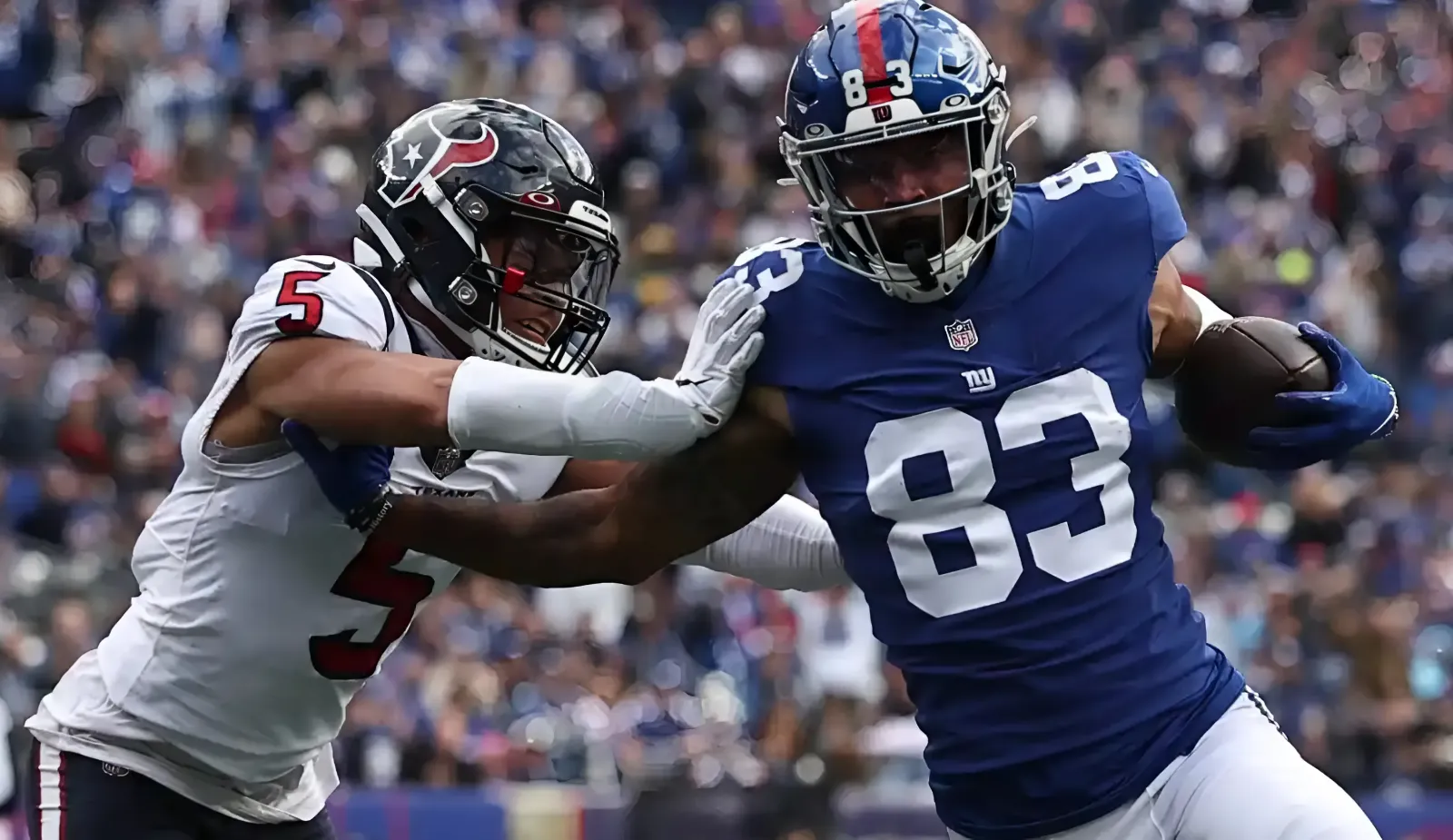
Zach Benson exploded onto the scene as an 18-year-old NHL rookie, looking to make an even bigger impact for the Buffalo Sabres in his second season. After the dust settled on the NHL Draft, free agency, and the trade market, the Sabres appear to be banking on a leap in production from their 2023 first-round pick. Unless Buffalo can add a top-six forward via trade, Benson is poised to take on a bigger scoring role for the club.
As the current Sabres roster stands, Benson and newcomer Jason Zucker will fill the second and third-line left-wing positions. Zucker has historically succeeded in scoring roles, although his consistency in production season-to-season is iffy. Benson posted 11 goals and 30 points in 71 games last season.
Benson’s strong suit in his rookie season was his forechecking and defensive responsibility. He was great in a shutdown role on a line with Jordan Greenway, especially when centered by Dylan Cozens. The trade for Ryan McLeod brings another strong defensive presence to the fold and could end up between Benson and Greenway.
Whoever Benson plays with, being selected 13th overall implies a high offensive ceiling. In theory, we should see a significant jump from 30 points. To better understand what to expect, let’s look into comparable players in recent history, what they accomplished in year two, and if the Sabres can expect the same.
Zach Benson Comps
Not many 18-year-olds play in the NHL right after being drafted, which puts Zach Benson in elite company. These players are usually selected towards the top of the draft, which makes his early debut even more of a rarity. To make comparisons more accurate, let’s separate the three major states of the game – even strength, powerplay, and penalty kill.
Even Strength
At even-strength, Benson’s rookie season most closely compares to two big, slow developers. Alexis Lafreniere is the closest performer at 18, followed by Kirby Dach. These comparisons are based on rate stats and advanced metrics, hinting at more than offensive production correlation.
Lafreniere recorded 12 goals and 21 points in 56 games as a rookie former first-overall selection, with all points coming at even strength. Dach registered eight goals and 23 points in 64 games at 18, with 20 points coming at even strength. Benson outscored both, with 28 points at even strength.
Matthew Tkachuk, Andrei Svechnikov, and Brady Tkachuk posted the next three closest 18-year-old seasons to Benson in recent history, which is encouraging for the Sabres sophomore’s upside. They posted 35, 32, and 35 points at even strength respectively.
So what kind of leaps in production did these players make at 19?
Lafreniere went slightly backward from 0.38 even strength points per game to 0.37. Dach went from 0.31 to 0.44. Matthew Tkachuk had 0.46 per game at 18 and 0.47 at 19, while his brother Brady had 0.49 and 0.51. Svechnikov went from 0.39 to a massive 0.60 at 19.
The average improvement of 0.07 between those top five comps would put Benson at 38 even-strength points. That’s a solid 10-point improvement from his rookie season.
Powerplay
Zach Benson didn’t get much run on Buffalo’s powerplay in 2023-2024 and managed only two points with the man advantage. The similarities aren’t as close because of this, but there are hints of where Benson can expand his overall game.
Nico Hischier is his closest comparison, although he played all 82 games and received a more extensive look on the powerplay. Hischier was a much more heralded prospect, as he was taken first overall. He scored 20 goals in his rookie season, but only one came with the man-advantage. He had six total powerplay points.
The following season, Hischier nearly doubled his total, with 11 points. He received more time on the first unit and benefited from it. With Jeff Skinner’s bumper role vacated, Benson could receive the same opportunity. There are other more likely candidates in line such as Cozens and Jack Quinn, but the opportunity is there.
Juraj Slafkovsky is another former first-overall selection and the second-most similar comparison to Benson’s powerplay analytics. Slafkovsky had two powerplay points in 39 games in his rookie season, before catapulting to 14 points this past season.
David Pastrnak, Svechnikov, and Jesperi Kotkaniemi are the other closest 18-year-old season comparisons. Pastrnak didn’t receive much opportunity with the man advantage until he turned 20. His career took off from there.
Svechnikov’s powerplay output increased from five points to 20 in his sophomore season. Kotkaniemi is still battling for powerplay time and never recorded more than five points with a man up in his first four seasons.
Whether Benson receives an expanded powerplay role remains to be seen. It’s hard to predict what Sabres head coach Lindy Ruff and assistant Seth Appert have in mind to improve a lackluster performance last season. If Benson remains on the second unit as a non-essential puck-toucher, it’s hard to see more than five powerplay points in his future.
Penalty Kill
Not many 18-year-olds jump right into the NHL in a defensive role, so it’s hard to find close shorthanded comparisons to Zach Benson. Isac Lundestrom, Tyson Jost, Dach, and Hischier were the closest to Benson’s output and role down a man.
Lundestrom and Jost are considered bottom-of-the-lineup reliable players, and Hischier is a perennial Selke candidate at this point in his career. Dach’s faced a lot of injuries but has made more of an offensive impact than defensive, although he’s adept on the penalty kill.
Benson wasn’t as good as those four on the penalty kill, but has the attitude and instincts to develop in the role.
Zach Benson Projection
Zach Benson’s sophomore season with the Sabres should see a jump in production but don’t expect some spectacular leap. After 1,000 season simulations using PuckLuck’s player projection model, half of those simulations fell between 27 and 42 points. 50% of his goal totals fell between eight and 16.
It’s important to note that development isn’t always linear, although Benson’s comps as an 18-year-old do suggest a bright future ahead. These simulations also vary in games played and ice time, as injuries can occur and ice time can vary based on line combinations and usage.
That said, he did score 20 or more goals about 15% of the time. He also exceeded 50 points at about the same percentage. So there is upside, but there’s also potential for a dip.
Benson’s expected to start in a middle-six role, which would designate Cozens and McLeod as his most common centers. Quinn, Greenway, and Zucker are most likely to play on his other wing. Accounting for the boost in production from his teammates, Benson should be closer to his upper limit than his lower limit, statistically speaking.
PuckLuck’s projection has him at 14 goals and 39 points in 70 games, which would exceed his rookie season by three goals and nine points in one less game. That’s an increase of 0.42 points per game to 0.55 points per game. That’s a bigger jump than Lafreniere and the Tkachuk brothers saw from 18 to 19. The leap would mirror Dach’s even-strength growth at that age, and only Svechnikov improved his production more.
If you’re looking for Benson to become a top-six forward overnight, it probably won’t happen. That’s part of the reason why the Sabres are looking to add one via trade. He should be able to take on more responsibility, however, and the Sabres will have to win the goal-differential battle by relying on his defensive ability. Any added production will be a bonus.



